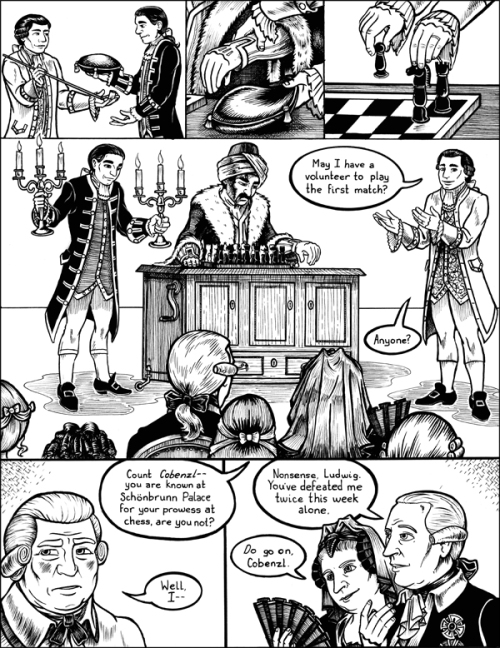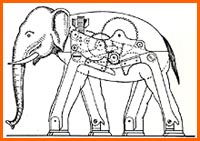
The Clockwork Game is a novelization of the story of the Turk in the form of a webcomic/graphic novel by the artist Jane Irwin. The Turk was a automation “invented” in the 18th century by a Hungarian Wolfgang von Kempelen which could play chess with people. People all across Europe flocked to see the automaton. Of course such technology did not exist back. The Turk was actually a hoax and there was a hidden contraption where a human would play chess but it would appear as if the automaton is playing chess. The automaton was named the Turk because its appearance was like that of the Turk. Most themes in Clockpunk deal with what might have been but as the Turk demonstrates there is plenty of room for exploring the hoaxes, the half-truths and perhaps even Clockpunk conspiracy theories! Anyway here is Jane’s description of the webcomic/ graphic novel.
Clockwork Game is a mostly-true story, a dramtization of actual historical events, retold with as little conjecture as possible. Some characters, whose names and histories were lost to the predations of time, had to be created almost entirely from whole cloth. Strong—but not ironclad—proof exists for the actions depicted in certain scenes. And, of course, dialogue and personalities had to be invented, based on whatever writings were available.
I was drawn to the incredible story of The Turk because it seems far too fantastic to actually be true, and yet with each new book and article, the facts became much more captivating than any fiction I could have created.
Here is an excerpt from the wbecomic. The comic is updated every Thursday.

The reader should also check out Jane Irwin’s official website at this URL.


Recent Comments